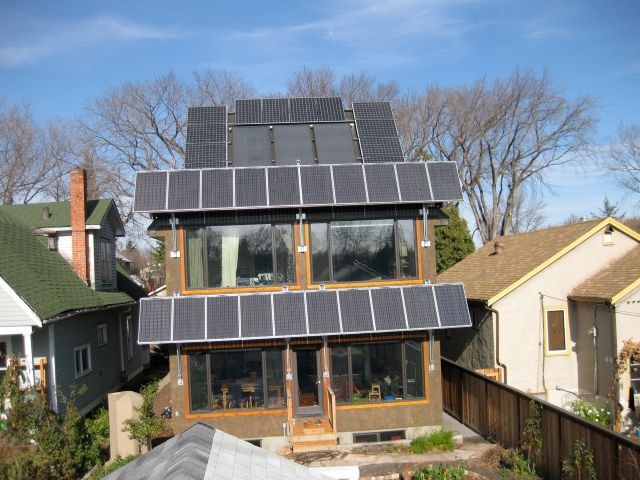_thumb.jpg)

The Mill Creek NetZero Home (MCNZH) is a landmark cold-climate home. Situated in Canada's northernmost major city, Edmonton, Alberta, it will produce as much or more energy than it consumes over the course of a year. Furthermore, it aims to be Western Canada's first LEED-Platinum certified residential building. Construction began on July 30th, 2008.
The co-owner of the home, Conrad Nobert, is blogging about the many green features of the home. This is a table of contents of his blog entries. You can navigate using the table, or scroll down to view the posts in reverse chronological order.
- Introduction
- Philosophy/Motivation
- The most important aspects of a cold-climate NetZero home:
- Walkable Location
- Solar Awning
- Solar Hot Water
- Flex House
- Computer Simulation:
- Deconstruction
- Heating System
- Wood Heat
- Recycling Gluelam Beams
- Square Footage
- Insulated Basement Slab
- Foundation Walls
- Light Pipe
- Pipe Insulation
- Metal Roof
- Passive Solar Design
- Waste Reduction
- Heathy Home
- Media
- FAQ
- Airtight
- Concrete Floor Finish
- Phantom Load
- Ventilation
- Water Usage
- Grey Water
- Window Coverings
- Reusing Doors
- Cold Room
- Financial Incentive
- Progress
- Observations
- A Net Zero Energy Year


